A block of mass M is supported by a cord C from a rigid support , and another cord D is attached to the bottom of the block . If D is given a sudden jerk D breaks But if D is pulled steadily , cord C breaks . Why ?
Step by step video & image solution for A block of mass M is supported by a cord C from a rigid support , and another cord D is attached to the bottom of the block . If D is given a sudden jerk D breaks But if D is pulled steadily , cord C breaks . Why ? by Physics experts to help you in doubts & scoring excellent marks in Class 11 exams.
Updated on:21/07/2023Topper's Solved these Questions
- NEWTONS LAWS OF MOTIONBOOK - PHYSICS GALAXY - ASHISH ARORACHAPTER - NEWTONS LAWS OF MOTIONEXERCISE - Conceptual MCQs
23 Videos
- NEWTONS LAWS OF MOTIONBOOK - PHYSICS GALAXY - ASHISH ARORACHAPTER - NEWTONS LAWS OF MOTIONEXERCISE - Numerical MCQs
90 Videos
- NEWTONS LAWS OF MOTIONBOOK - PHYSICS GALAXY - ASHISH ARORACHAPTER - NEWTONS LAWS OF MOTIONEXERCISE - Practice Exercise 2.6
1 Videos
- LINEAR MOMENTUM & ITS CONSERVATIONBOOK - PHYSICS GALAXY - ASHISH ARORACHAPTER - LINEAR MOMENTUM & ITS CONSERVATIONEXERCISE - exercise 1.3
3 Videos
- RIGID BODIES AND ROTATIONAL MOTIONBOOK - PHYSICS GALAXY - ASHISH ARORACHAPTER - RIGID BODIES AND ROTATIONAL MOTIONEXERCISE - Unsolved Numerical
63 Videos
Similar Questions
A block of mass M is suspended by a corf A from the ceiling and another cord B is attached to the bottom of the block as shown in Which string will break if we pull the string B
(a) with a sudden jerk,
(b) steadily ?
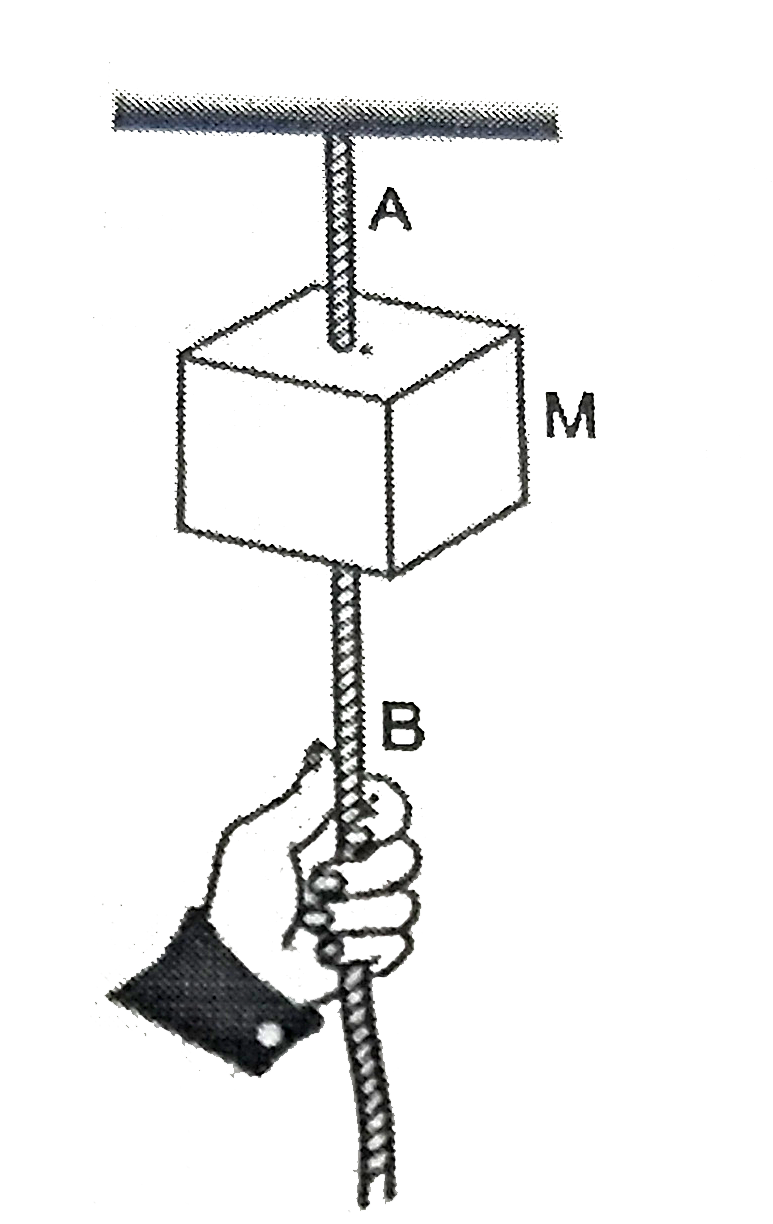
View Solution(a) A 10-kg block is supported by cord that runs to a spring scale, which is supported by another cord from the ceiling as shown in fig. What is the reading on the scale?
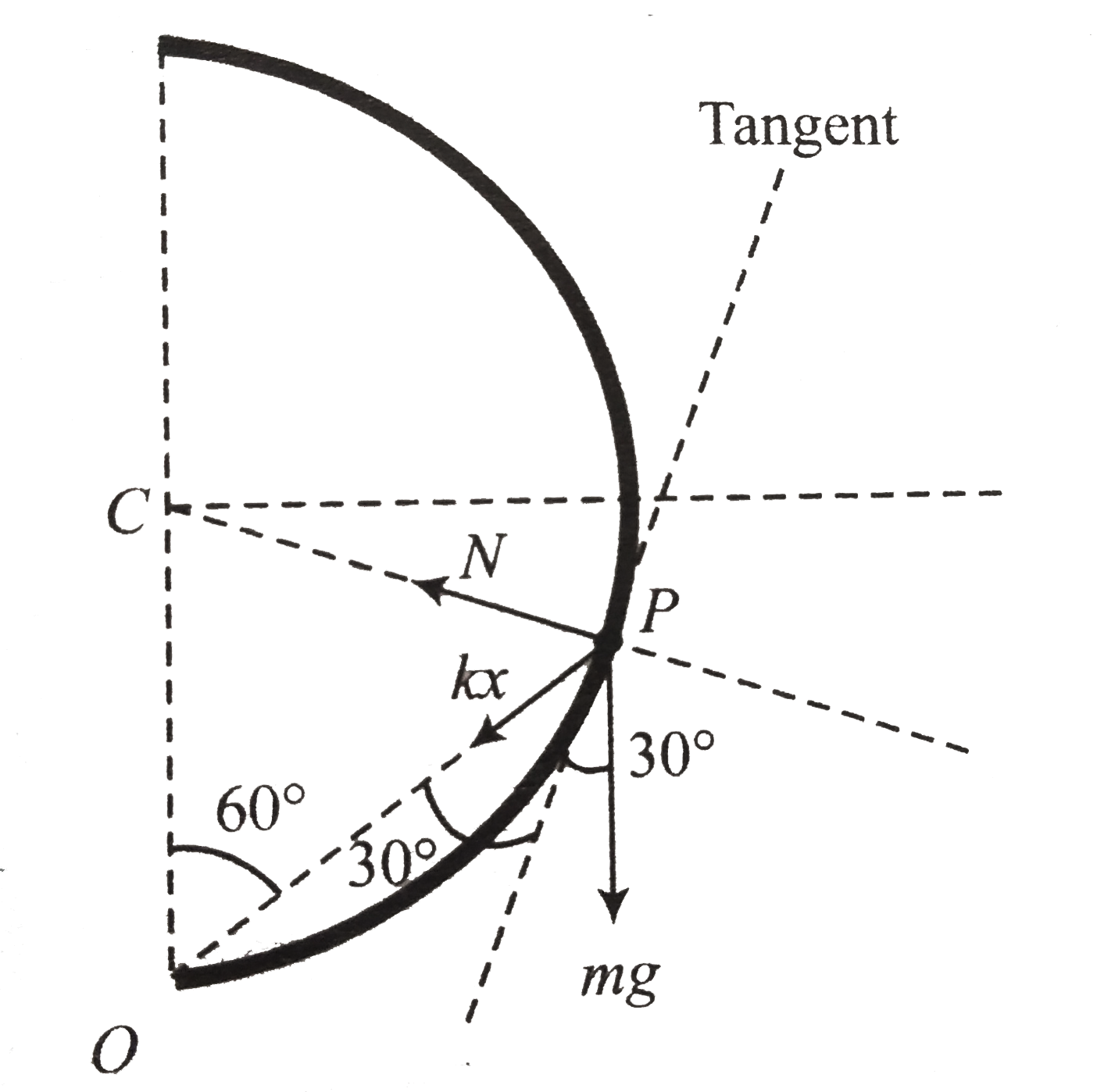
(b) In Fig. the block is supported by a cord that runs around a pulley and to a scale. The opposite end of the scale is attached by a cord to a wall. What is the reading of the scale?
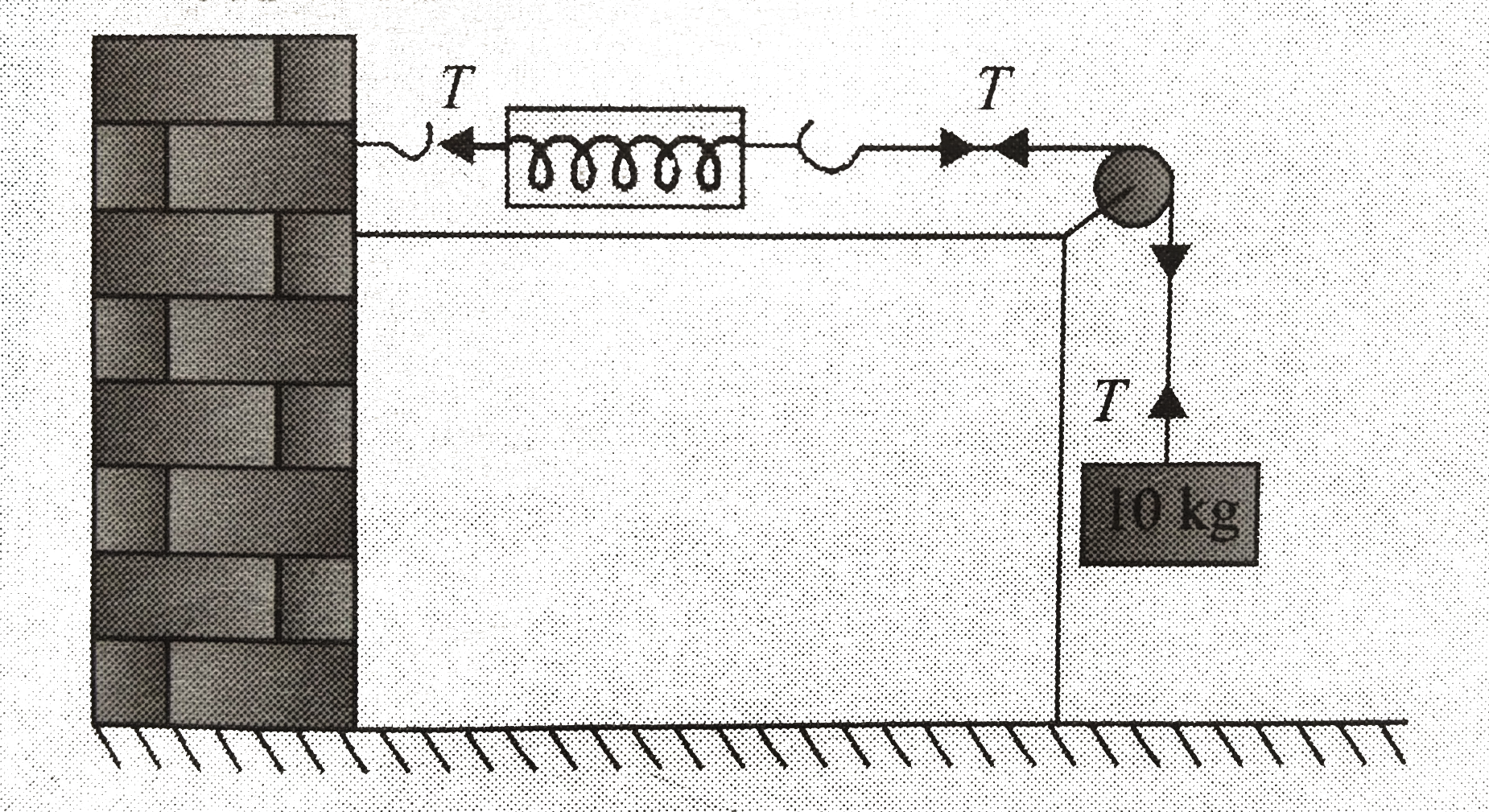
(c ) In fig. the wall has been replaced with a second 10-kg block, what is the reading on the scale now?
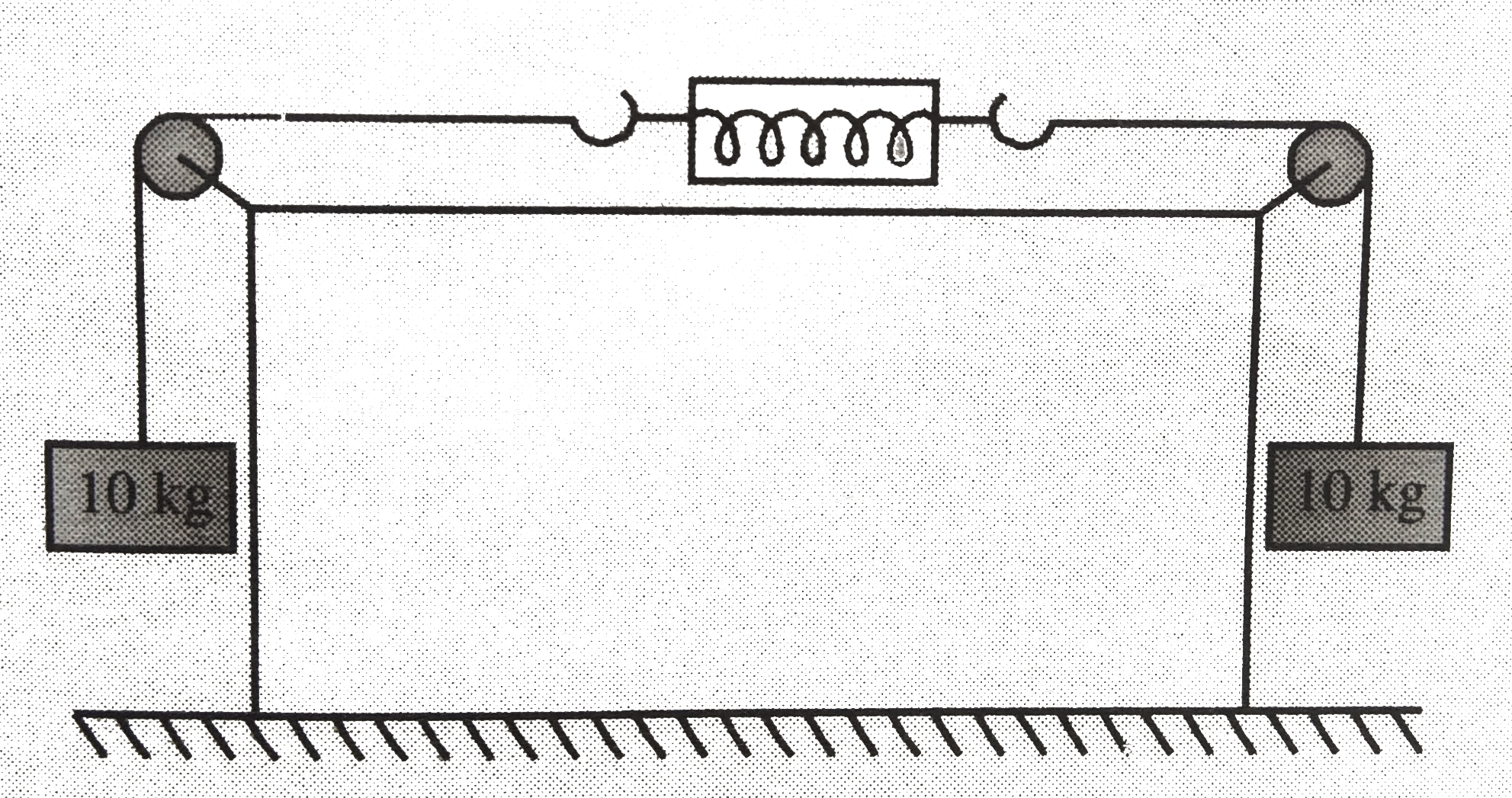 .
.
View Solution
Knowledge Check
A heavy block of mass m is supported by a cord C attached to the ceiling, and another cord D is attached to the bottom of the block. If a sudden jerk is given to D, then
 Acord C breaksBcord D breaksCcord C and D both BreakDNone of the cords breaks
Acord C breaksBcord D breaksCcord C and D both BreakDNone of the cords breaksA block of mass m is suspended from a fixed support with the help of a cord. Another identical cord is attached to the bottom of the block. Which of the following statement is/are true?
AIf the lower cord is pulled suddenly, only the upper cord will break.BIf the lower cord is pulled suddenly, only the lower cord will break.CIf pull on the lower cord is inceased gradually, only the upper cord will break.DIf pull on the lower cord is increased gradually, only the upper cord will break.An ideal spring having force constant k is suspended from the rigid support and a block of mass M is attached to its lowe end. The mass is released from the natural length of the spring. Then the maximum exiension in the spring is
A4mgkB2MgkCMgkDMg2k
In the system shown in fig. block of mass M is placed on a smooth horizontal surface. There is a mass less rigid support attached to the block. Block of mass m is placed on the first block and it is connected to the support with a spring of force constant K. There is no friction between the blocks. A bullet of mass m0, moving with speed u hits the block of mass M and gets embedded into it. The collision is instantaneous. Assuming that m always stays over M, calculate the maximum extension in the spring caused during the subsequent motion.
K=8960N/m,u=400m/s

View SolutionA dynamometer D is attached to two blocks of masses 6 kg and 4 kg as shown in the figure. The reading of the dynamometer is

View SolutionTwo blocks of masses M and 3M are placed on a horizontal, frictionless surface. A light spring is attached to one of them and the blocks are pushed together with the spring between them. A cord initially holding the blocks together is burned, after that, the block of mass 3M moves to the right with a speed of 2.00m/s. (a) What is the velocity of the block of mass M. (b) Find the system's original elastic potential energy, taking M=0.350kg. (c) Is the original energy in the spring or in the cord? Explain your answer. (d) Is momentum of the system conserved in the bursting apart process? How can it be with large forces acting? How can it be with no motion beforehand and plenty of motion afterward?
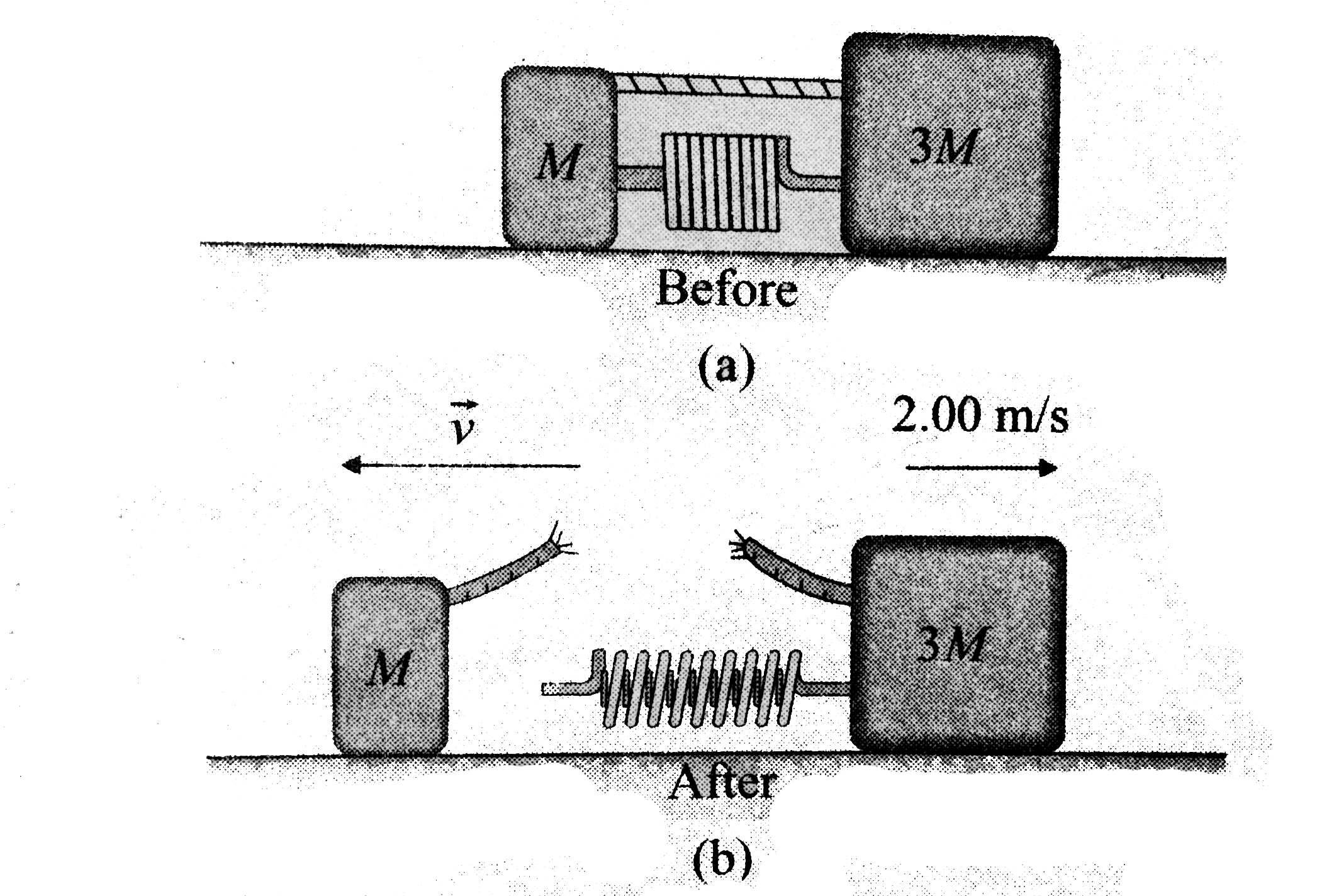
View SolutionA uniform disc of mass M and radius R is mounted on an axle supported in frictionless bearings. A light cord is wrapped around the rim of the disc and a steady downward pull T is exerted on the cord. The angular acceleration of the disc is
View SolutionA block B of mass M is suspended from a cord of length l attached to a cart A of mass M as shown in the figure. The horizontal surface on which the cart moves is smooth. Initially both the cart and the block are at rest in the position shown. Now B is released. Take M=m=2kg,θ=45∘andg=10m/s2.
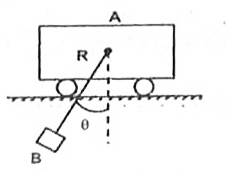
The tension in the cord immediately after the system is released from rest is
View Solution
